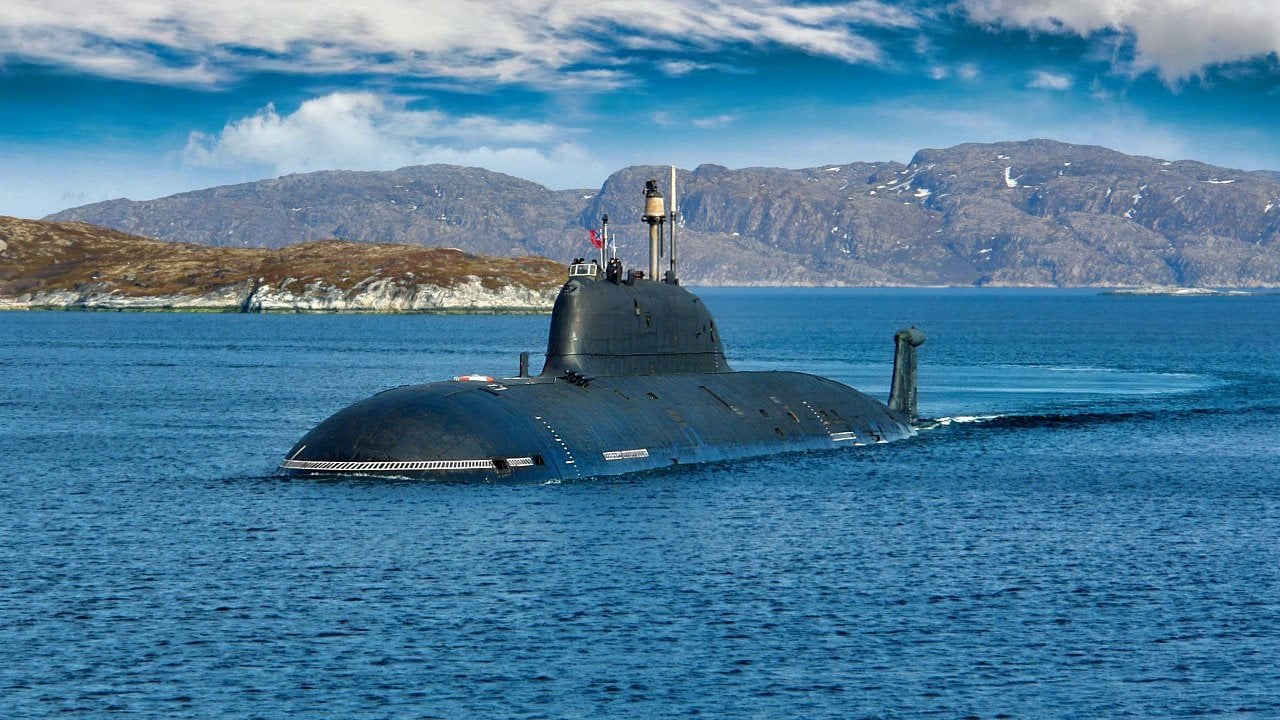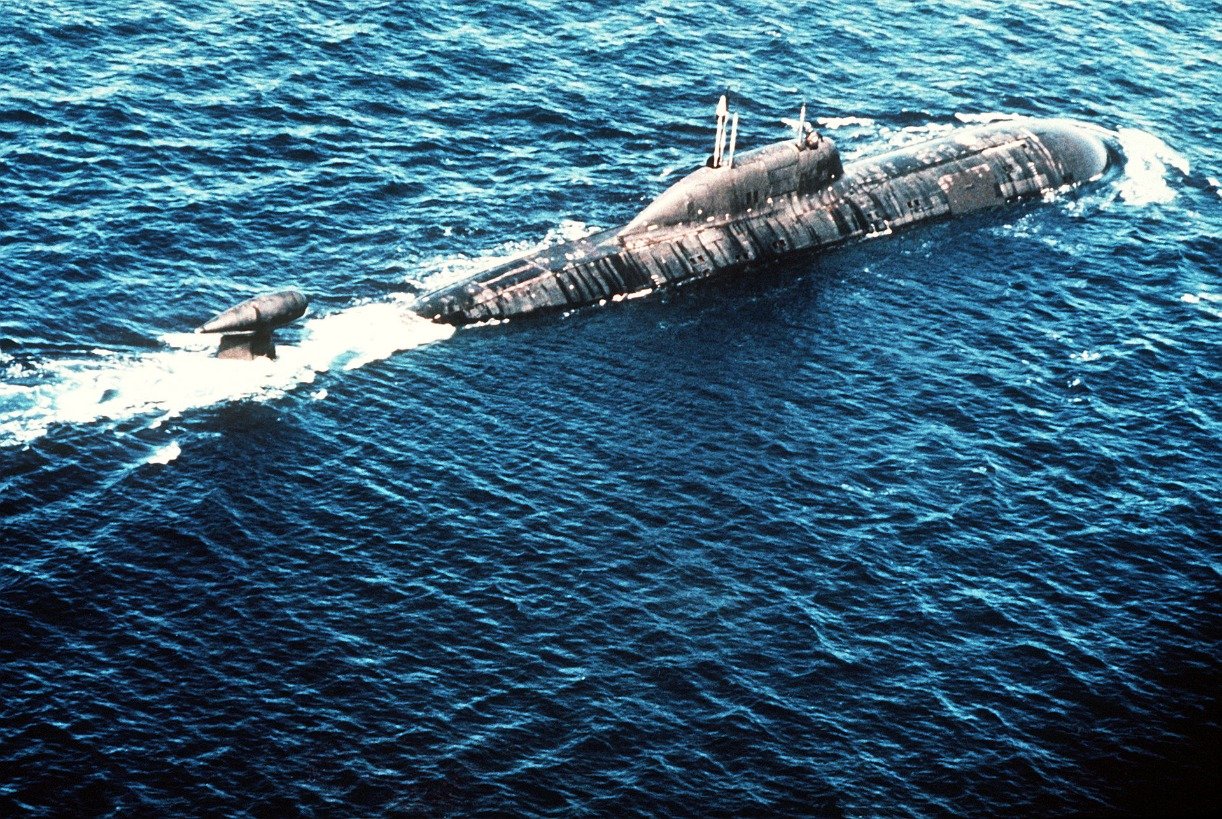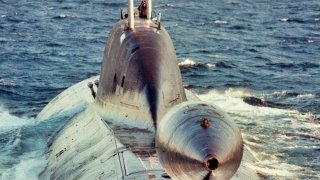'Sir, We Lost a Nuclear Submarine': Russia's Titanium Sub Disaster (Lost Nukes)
The K-278 Komsomolets, a Soviet Mike-class nuclear-powered submarine, launched in 1983, was a technological marvel with a titanium hull that enabled it to dive deeper and run faster than its American counterparts.
What You Need to Know: The K-278 Komsomolets, a Soviet Mike-class nuclear-powered submarine, launched in 1983, was a technological marvel with a titanium hull that enabled it to dive deeper and run faster than its American counterparts.

However, the submarine’s tragic sinking in 1989 sparked significant concern due to the two nuclear warhead-tipped torpedoes it carried, which remain unretrieved on the Barents Sea floor.
The use of titanium in its construction represented a notable Cold War advancement, but the incident highlighted Western fears of Soviet nuclear weapons falling into the wrong hands, much like the scenario depicted in Tom Clancy's The Sum of All Fears.
The K-278 Komsomolets, also known by the NATO reporting name Mike-class, was a Soviet nuclear-powered attack submarine launched in 1983. Only one Mike-class submarine was ever made, but in her brief service life she managed to inflame two distinct western fears: one, that the Soviets would pull away from the Americans with respect to military technology, and two, that the Soviets would lose a portion of their massive nuclear weapons stockpile.
Mike-Class from Russia: A novel technological development
The Americans expended vast resources during the Cold War, keeping pace with (and pulling away from) the Soviet Union’s military capabilities. The Soviet demise has been attributed to, in part, the Soviet’s futile efforts to keep pace with the Americans, who, under President Reagan, expended copious capital in the development and deployment of weaponry. Said another way: America escalated and won an arms race.
Evidence of the arms race was everywhere. In space, the final frontier, the two superpowers competed urgently, not to be outdone by the other. The Soviets attained an early lead, becoming the first to orbit a satellite, orbit a manned capsule, and space walk. But the US chose to spend about 4.5 percent of the total federal budget on NASA in calendar years 1965 and 1966 (NASA’s budget has been below one percent of the federal total for thirty years, today hovering at less than one-half of one percent), caught up; America blew the Soviets away, becoming the first and only nation to send a manned mission to the moon, and the only nation to operate a space shuttle.

Cold War competition fueled development in the aerospace realm, too, where investment led to impressive technological advancements in jet engines, radar, stealth, air-to-air missiles, aerodynamics, thrust vectoring, supercruise, data fusion, and interconnectivity. Spurning one another onwards, the US and the Soviets progressed from fielding single-engine lawn darts like the MiG-15 and F-86 Sabre to fourth-generation workhorses like the Su-29 and F-16 Fighting Falcon to fifth-generation marvels like the Su-57 Felon and the F-22 Raptor.
At sea, competition raged, too – especially with respect to nuclear power, and nuclear-armed, submarines. As a part of the increasingly important nuclear triad, submarines began to warrant considerable attention. The superpowers developed increasingly sophisticated models, including the Akula, the Sierra, the Los Angeles, and the Seawolf.
What Made the Mike-Class Special: The Titanium Hull
One of the more curious Cold War innovations concerning submarine technology was the use of titanium hulls, as with the Mike-class. To this day, the U.S. Navy has no titanium submarines.
The Mike “was a marvel,” according to Brent M. Eastwood. “It had an inner hull made of titanium, an innovation at the time that created the ability to dive deeper and run faster and more quietly. It could withstand higher pressure due to the titanium and reached depths of over 3,350 feet and speeds up to 30 knots.”
Mike’s titanium hull facilitated much of her impressive specifications, as titanium was roughly half the weight of steel yet equally as strong. Additionally, titanium was resistant to saltwater corrosion – ideal for sea-faring submarines.
American designers were alerted to the Soviet use of titanium in their submarines. And the Americans considered, in the Cold War tradition, matching the Soviet design, creating titanium-submarines for the US fleet. Surely, the appearance of titanium hulls pinged US insecurities about the Soviets opening up a technology gap.
But titanium was difficult to source and difficult to weld. The Americans, in a rare moment of Cold War spending restraint, decided that the investment in titanium was a bad spend.
Lost Nuclear Weapons on Mike-Class Submarine
Tom Clancy’s appropriately titled The Sum of All Fears addresses what was a peak concern during the Cold War, and especially, in the years following the Soviet Union’s dissolution – that one or more of the Soviet Union’s many thousand nuclear warheads would fall into the hands of a nefarious regime or non-state actor. In The Sum of All Fears, a downed fighter jet equipped with a nuclear weapon is uncovered in the Middle East. The nuclear weapon is harvested and sold on the black market.
When the lone Mike-class submarine sank in 1989, with a complement of nuclear weapons, the incident sparked fears similar to those realized in Clancy’s novel.
The Mike sank, in the Barents Sea (100 miles southwest of Bear Island, Norway), after a fire started in the engineering compartment. Of the Mike’s 69 sailors, only 27 survived. Of greater concern to the international community, however, was the fact that the Mike had sank with two nuclear warhead-tipped torpedoes. The Soviets assured the world that the weapons were not leaking, nor causing any sort of environmental harm.
Retrieving the nuclear warheads from the Mike-class wreck does not seem to be possible – but the fact that two nuclear warheads are essentially sitting, unaccounted and waiting to be retrieved, exacerbates Western fears over the whereabouts of old Soviet weaponry.
About the Author
Harrison Kass is a defense and national security writer with over 1,000 total pieces on issues involving global affairs. An attorney, pilot, guitarist, and minor pro hockey player, Harrison joined the US Air Force as a Pilot Trainee but was medically discharged. Harrison holds a BA from Lake Forest College, a JD from the University of Oregon, and an MA from New York University. Harrison listens to Dokken.
All images are Creative Commons of Akula-Class submarines that came after the Mike-Class boat noted in this article.
From The Vault


